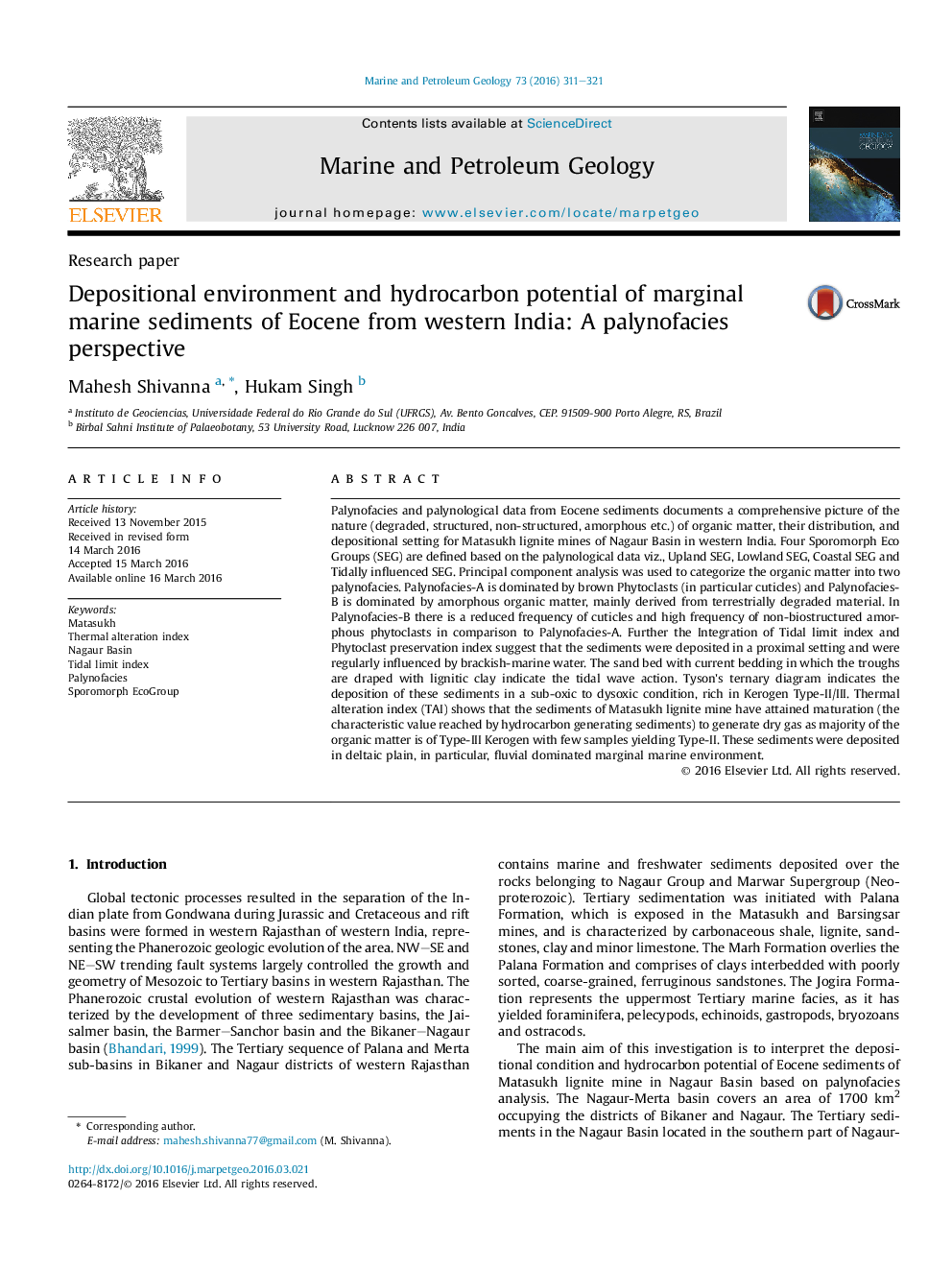| کد مقاله | کد نشریه | سال انتشار | مقاله انگلیسی | نسخه تمام متن |
|---|---|---|---|---|
| 6434805 | 1637154 | 2016 | 11 صفحه PDF | دانلود رایگان |
- Depositional environment and hydrocarbon potential was determined on palynofacies basis.
- The sediments are rich in terrestrial organic matter with high frequency of cuticles.
- Tidal Limit Index (TLI) indicates an influx of brackish water throughout the sequence.
- Phytoclast Preservation Index (PPI) suggest proximal depositional environment.
- Thermal Alteration Index suggest the sediments are rich in Type III Kerogen and hence generate dry gas.
Palynofacies and palynological data from Eocene sediments documents a comprehensive picture of the nature (degraded, structured, non-structured, amorphous etc.) of organic matter, their distribution, and depositional setting for Matasukh lignite mines of Nagaur Basin in western India. Four Sporomorph Eco Groups (SEG) are defined based on the palynological data viz., Upland SEG, Lowland SEG, Coastal SEG and Tidally influenced SEG. Principal component analysis was used to categorize the organic matter into two palynofacies. Palynofacies-A is dominated by brown Phytoclasts (in particular cuticles) and Palynofacies-B is dominated by amorphous organic matter, mainly derived from terrestrially degraded material. In Palynofacies-B there is a reduced frequency of cuticles and high frequency of non-biostructured amorphous phytoclasts in comparison to Palynofacies-A. Further the Integration of Tidal limit index and Phytoclast preservation index suggest that the sediments were deposited in a proximal setting and were regularly influenced by brackish-marine water. The sand bed with current bedding in which the troughs are draped with lignitic clay indicate the tidal wave action. Tyson's ternary diagram indicates the deposition of these sediments in a sub-oxic to dysoxic condition, rich in Kerogen Type-II/III. Thermal alteration index (TAI) shows that the sediments of Matasukh lignite mine have attained maturation (the characteristic value reached by hydrocarbon generating sediments) to generate dry gas as majority of the organic matter is of Type-III Kerogen with few samples yielding Type-II. These sediments were deposited in deltaic plain, in particular, fluvial dominated marginal marine environment.
Journal: Marine and Petroleum Geology - Volume 73, May 2016, Pages 311-321
